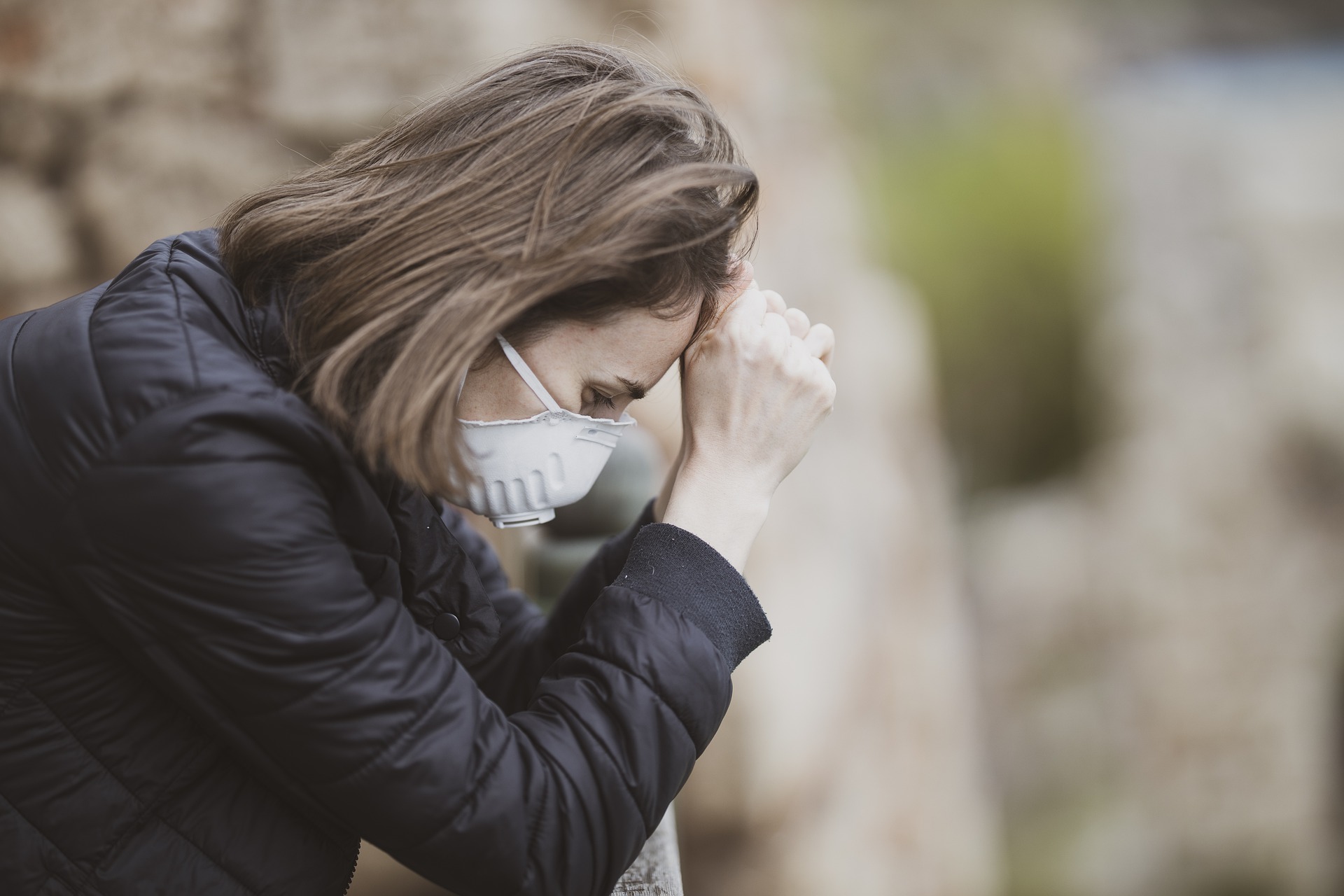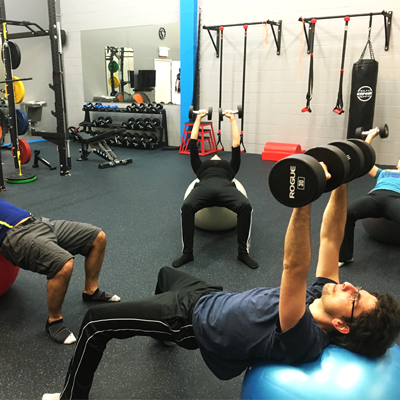
The goal of any approach for overcoming Covid-19 should be to minimize all harm and deaths. In our focus to defeat the virus, we seem to forget that a life destroyed due to one size fits all public health measures is just as important as a life lost due to Covid-19. More importantly, we should not have to sacrifice children and young adults in order to protect the elderly. Yet this is what we are doing.
Here are a few sobering consequences of the policies in place:
- Health Canada has reported a record high of 3,351 opioid deaths in the six months following the implementation of Covid-19 measures, a 74% increase from the previous six month period.1 The large majority of these deaths were young males aged 20-49 years.
- Social isolation and quarantine measures, economic instability, anxiety, and reduced access to support networks have endangered women and girls around the world. In March of this year Global News reported that seven women in Quebec were killed in 7 weeks, all victims of domestic abuse.2 An article published in the New England Journal of Medicine identified intimate partner violence during Covid-19 as a pandemic within a pandemic.3 The United Nations Secretary-General has called for a “domestic violence ceasefire”, and has urged all governments to take action in protecting women as part of their national response plans for Covid-19.4
- McMaster Children’s Hospital in Ontario has reported a tripling in youth suicide attempts due to factors such as increased isolation, conflict at home, and limited access to doctors, teachers, coaches and peers who could spot changes in their health and well being.5
- Despite an uptick in Covid-19 cases, Las Vegas schools took action to quickly re-open schools due to a significant rise in suicides.6 The Clark County Superintendent told The Times “When we started to see the uptick in children taking their lives, we knew it wasn’t just the COVID numbers we need to look at anymore”.
- A study published in the Journal of the American Medical Association estimated that the decision to close schools in 2020 may be associated with a decrease in life expectancy for US children.7 The authors warned that while the public discourse focused on saving lives in the present, the years of life that may be lost in the future due to decisions made today have been largely ignored.
- A study published in the British Medical Journal used data from several countries to warn us that “in the fight against coronavirus, children are being put at risk in order to reduce the spread of a disease that mainly causes direct harm to adults.”8 The authors questioned certain measures, such as the closure of schools that have not shown to significantly prevent deaths in adults, yet have gravely impacted children. An article in the Lancet reminded us that it remains extremely rare for any child to suffer from Covid-19, and warned of the importance of constantly scrutinizing measures to ensure a balanced outcome for all.9
- For the period between January 26, 2020, until October 3rd, 2020, the CDC discovered that the highest increase in total excess deaths per age group occurred among Americans aged 25-44.10 The number of all-cause fatalities in this age group was 26.5% above average levels, and the majority of these excess deaths were not directly due to the coronavirus.10,11
Who Framed Sweden? And Why it Matters.
In the age of the information super highway, it is journalists and the media that choose what narratives to push, and how much context they provide for each story as they help mold public opinion. This was never more obvious than in the case of Sweden.
It is no secret by now that Sweden had a different strategy for Covid-19, choosing to provide its people with recommendations as opposed to enforcing strict lockdowns, and acting carefully to avoid measures that would have drastic effects in other areas of public health. Due to what was regarded as a unique approach, Sweden soon became the rest of the world’s punching bag. The international media would often and blatantly misrepresent not only Sweden's strategy, but the results as well.
According to a study published in Global Health, when reporting on Sweden many journalists focused on six main narratives and, depending on the angle chosen, they framed their story in a way that distorted the truth.12
This of course led to everyone having talking points when criticizing or defending Sweden’s approach. Yet to this day most people don’t have the full picture or even an accurate understanding of the approach itself, and are quick to cite data with little context to support their opinion.
For example, we hear that Sweden suffered a high number of Covid-19 deaths due to not enforcing stricter lockdown measures and mask mandates, but we are not provided with the context that twenty-one countries in Europe, including those that implemented strict lockdowns, as well as Canada and the US, had higher excess mortality than Sweden.13,14 In fact, while young adults in the US suffered from a 26.5% increase in deaths, Sweden experienced a decrease in deaths among people aged 15-64.15
The numbers do not tell the whole story, and it is too early to judge Sweden's overall outcome. But, at the very least, Sweden can have us questioning whether the unprecedented draconian lockdowns that other countries resorted to have led to more preventable deaths, especially in demographics that were virtually immune to Covid-19.
Furthermore, we cannot argue with Sweden’s approach of constantly scrutinizing the short and long term risks and benefits of every measure, while openly admitting where errors were made- such as failing to adequately protect seniors in nursing homes. Sweden separated politics from science, and clearly communicated their evidence-based recommendations to the public. This is in great contrast to some of the restrictions we’ve seen in Canada, such as the closure of outdoor playgrounds, the enforcement of masks even outdoors, and the arbitrary curfews, all of which have been shown to be ineffective in reducing the spread of the virus.
Non-Evidenced-Based Measures
Evidence that the public’s understanding and voice matters was seen in Ontario when Premier Doug Ford reversed the decision to close outdoor playgrounds after receiving severe backlash, including accusations by experts for having the science “absolutely upside down”.16 The virus is much less likely to be transmitted outdoors, and open air activities are one of the few remaining safe ways for children to release their anxiety. Physical activity and sunshine also help to boost their immune system. Thank goodness that the Premier flip flopped so quickly and reopened the playgrounds.
Another example of a non-scientific measure occurred in Quebec where Premier François Legault ordered face masks to be worn outdoors, even though the province’s director of public health, Dr. Horacio Arruda, admitted that there is no data that transmission is happening outside.17 According to Dr. Arruda, experts believe that there could one day be a risk of outdoor transmission due to the variants. And there lies the problem: for fear of what could happen tomorrow, despite all the evidence to the contrary, we are implementing unscientific measures that are harming children and young adults today, while losing the public’s trust in the process.
CDC: Children in Schools do NOT Spread the Virus
According to the CDC, a thorough review of the evidence shows that children attending school do not substantially contribute to community transmission of the virus.18 Furthermore, it is more likely for transmission to occur between staff members than from students to staff, staff to student, or student to student. This undoubtedly makes it easier to coordinate safety measures among the adults in school settings. The following three studies highlight the low level of risk for both students and teachers.
During the height of the pandemic, Sweden kept its schools open and 1,951,905 children aged 1 to 16 attended without any mask recommendations. In a four month period, while community spread was prevalent, there were zero deaths from Covid-19 and only 15 hospitalizations, 4 of which were cases with serious underlying illness such as cancer.19 That's the equivalent of 1 child being hospitalized for every 130,000, or 1 out of 177,000 children without serious underlying conditions. In that same period, less than 10 preschool teachers and 20 school teachers ended up in the hospital due to the virus, an overall risk of 19 for every 100,000 teachers.
Another study in North Carolina used contact tracing to conclude that out of 90,000 students and staff there was not a single instance of child-to-adult transmission.20 During the study period there were 773 community-acquired infections but only 32 cases were acquired within schools. The authors concluded that secondary transmission of severe acute SARS-CoV-2 infections in 11 school districts was extremely rare. They noted that school closures can be safely avoided, especially since in-person teaching is essential not only for education but also for preserving public heath and the economy.
A study conducted in Norway between August to November 2020 also found minimal transmission of SARS-CoV-2 in primary schools.21 Children who contracted the virus outside of school and then attended school, with mild symptoms or asymptomatic, did not transmit the virus to others. The authors concluded that these findings, along with the results of multiple studies from Sweden, the Netherlands and Norway, show that teachers are not at higher risk of Covid-19 compared with other professions.
Furthermore, before lockdowns and school closures would become the norm, several public health specialists had expressed that allowing children to develop natural immunity would be good for society. For example, Quebec's public health director, Dr. Arruda, once told a news conference that "the more children will be, in my opinion, naturally immunized by the disease, the less they will become active vectors with older people.”22 Unfortunately, his comments angered teachers' unions and parents and we witnessed one more example of scientific evidence taking a back seat to public opinion and scoring political points.
A similar situation occurred in New York where Governor Cuomo expressed his doubts for having closed down schools, telling a news conference that quarantining everyone may have led to more spread of the disease.23 He had previously fought to keep schools open but eventually caved in to pressure. But can we really blame parents and teachers for being so afraid and pressuring politicians?
Evidence versus Fear Porn
Fear and negativity are the two most prevalent themes in the media's reporting of Covid-19. A study found that 87% of the coverage in national U.S. media is negative.24 Even when there is good news to report, journalists prefer to report on isolated incidences that involve bad news. So while it is abundantly clear that children and young adults are at extremely low risk for Covid-19, the media continues to focus on exceptional bad cases. This leads to a distorted public perception of the actual risks of Covid-19.
There will almost always be outliers when looking at scientific data, and while it is tempting to focus on them, they clearly do not represent the norm. Society is better served when we look at data in a non biased way, and make rational decisions based on a convergence of evidence, and not on statistical outliers highlighted by the media- such as the extremely rare case of a child suffering from Covid-19. And while journalists are competing to get the most exposure, the consequences of fear mongering are extremely harmful and lead to more anxiety and stress.
In addition to disproportionately reporting bad news during the pandemic, journalists have also been guilty of using misleading headlines. Here's one example: a story was published in Global News with the headline "Teacher at Montreal's Vanguard School dies after contracting COVID-19”.25 However, if you read the article you will learn not only that this teacher had underlying health conditions, but that he contracted the virus outside of school (he had not been on campus for about 2 months). So while the headline frightened teachers and parents, the actual case had nothing to do with a school setting.
Extended Lockdowns Lead to More Deaths
This should not be a controversial point, nor is it hindsight vision or "armchair critiquing." It was a predictable outcome, and this was acknowledged by the World Health Organization that warned against using lockdowns as a primary means of controlling the virus.26 It is one thing to shutdown society for a few weeks as a precautionary approach, and to allow time to regroup and organize, but to extend the lockdowns beyond this point is unprecedented, and for good reason.
Lockdowns lead to more harm, excess deaths, and lower life expectancy due to the effects of isolation, unemployment, depression, increased food disorders and lack of exercise, increased substance abuse, and avoidance of medical care.
Furthermore, during the first wave, scientists had warned that attempts to “flatten the curve” by locking down everyone, including healthy low-risk individuals, would broaden the curve and extend the pandemic.27 A year later "real world" data from multiple countries shows that this is exactly what happened: flattening the curve led to more infections and potentially more lives lost. 28
Why Did We Ignore The Risks of Lockdowns?
At the very beginning of the pandemic an epidemiological model, released by Neil Ferguson of Imperial College London, predicted that tens of millions of people would die in what would be the second coming of the Spanish Flu. The only solution, according to the report, was to apply drastic measures to physically distance the entire population for up to 18 months, hoping that by then a vaccine would become available.
Scientists continued to elevate the public's fear by providing data without sufficient context. For example, experts appearing in the media would carelessly state that about 3 people out of every 100 infected with the virus would die. They neglected to inform the public that, as is the case at the start of every pandemic, only very sick people in hospitals get tested and this obviously exaggerates the case fatality rate.
However, as real world data began to be published from several countries, it quickly became apparent that the Imperial College model was wrong by several orders of magnitude.29,30,31 The case fatality rate for children and young adults was lower than that of the seasonal flu, with a majority of cases being asymptomatic, and almost 100% of deaths were older people with several pre-existing conditions.
The convergence of evidence clearly indicated that we needed to focus the majority of our resources on isolating and protecting our most vulnerable population, especially seniors in long term care facilities. Unfortunately, politicians turned away from the real world evidence that mattered and, appearing blinded by the fear that had been generated by the clearly flawed projections, they failed to make decisions that could have saved thousands of lives.
We Failed to Protect our Most Vulnerable Population
One of the most regrettable failures occurred in many cities around the world, most notably in Montreal and New York: contagious Covid-19 patients were sent back to long term care facilities, and this resulted in the transmission of the virus among the most vulnerable population. This was a policy blunder that resulted in thousands of deaths, yet was never truly scrutinized by the media. In fact, governor Cuomo of New York was praised for his handling of the pandemic.
Despite Montreal having one of the strictest lockdowns in all of Canada, over 80% of deaths occurred in senior homes. This was a painfully clear example of how a targeted policy to address the known issues in nursing homes could have saved the lives of our most vulnerable population, but instead politicians focused on one size fits all lockdowns.
In many instances, the draconian lockdowns sacrificed the lives of younger people while also managing to neglect the older and most vulnerable population.
We Can Turn Things Around
At the start of the pandemic 15 leading Canadian medical experts, experienced in infectious disease and critical care, co-signed an article demanding the government to enforce more stringent lockdowns of schools, non-essential businesses and restaurants. Dr. Ari Joffe, a paediatric critical care medicine specialist, regrets having signed that document.32
Dr. Joffe explains that he had been fooled by the initial flawed models and misrepresentation of the case fatality rate. But when scientists, such as Dr. John Ioannidis, began to clearly show that the infection fatality rates were much lower than the numbers used to justify the lockdowns, Dr. Joffe had to admit his error and change course. He published a review paper showing how the cost of lockdowns in Canada is at minimum 10 times higher than the benefit in terms of population health and well-being.33 Dr. Joffe now recommends a targeted evidence-based approach to protect our most vulnerable population, while minimizing harm for the large majority of people that are at very low risk for Covid-19.
Dr. Joffe is a well respected medical specialist who was led down the wrong path early on, so imagine how much easier it was to confuse the lay public. More than ever, we need more people to rethink what Dr. Joffe calls the “Lockdown Groupthink” and to stop judging politicians solely by the number of Covid-19 cases and deaths in their district.
Politically, all measures to stop the virus make sense just as long as you are only judged on whether the number of Covid-19 cases and deaths in your district are decreasing. But the public shouldn’t be so quick to measure the success of a policy simply based on these figures. Only by looking at the bigger picture can we implement measures that attempt to balance overall outcomes.
My Message To You
Many people have taken it upon themselves to become social media warriors, standing up aggressively to anyone that so much as questions the policies in place. Unfortunately, their passion is focused on the singular idea that we are all at war together against an invisible enemy, and their outrage is reserved for anyone who dares question this narrative.
People who don’t blindly toe the line and question policies are immediately accused of thinking that the virus is not real, of believing in sci-fi inspired conspiracy theories, and of being selfish and inconsiderate even when they make valid points and support them with scientific data.
Nevertheless, we must be able to sympathize with our accusers because, more often than not, they strongly believe they are standing up for what is right, and that it is their civic responsibility to lash out against the “deniers”.
Unfortunately, our disproportionate focus on lockdowns, curfews, face masks, and waiting for vaccines to save us was a death sentence for many people, both young and old. This is now an indisputable fact that no longer needs debating. It is time to come together and have a better dialogue, and to push our politicians to invest in eliminating the vulnerabilities that have plagued our health care system for years.
I would like to take this opportunity to remind you that the greatest contribution you can make to defeat Covid-19 is to improve your own health. Public health experts that have not continually encouraged people to eat more nutritious food and to exercise, especially during the pandemic, are not deserving of their title. The evidence clearly shows that a healthier, active, and leaner population will withstand and defeat a pandemic better than a community of overweight and sedentary people. 34,35 That is the most important narrative.
Marc Jaoudé
Naturopath, Health Educator
Nutrition & Exercise Specialist
For more information on how to boost your health through food and exercise, we invite you to visit our website and learn about our services today.
References:
-
- Opioid- and stimulant-related harms in Canada. (2021, March 24). https://health-infobase.canada.ca/substance-related-harms/opioids-stimulants/.
- Olivier, A. (2021, March 24). Seven women killed in 7 weeks has Quebec sounding alarm over domestic violence spike. Global News. https://globalnews.ca/news/7715820/seven-women-killed-quebec-domestic-violence-spike/.
- Evans, M. L., Lindauer, M., & Farrell, M. E. (2020). A Pandemic within a Pandemic — Intimate Partner Violence during Covid-19. New England Journal of Medicine, 383(24), 2302–2304. https://doi.org/10.1056/nejmp2024046
- United Nations. (n.d.). UN chief calls for domestic violence 'ceasefire' amid 'horrifying global surge' | | UN News. United Nations. https://news.un.org/en/story/2020/04/1061052.
- Brown, D. (2021, March 18). Number of youth in hospital after suicide attempt tripled over 4-month period under COVID-19 | CBC News. CBCnews. https://www.cbc.ca/news/canada/hamilton/pandemic-safety-measures-children-teen-health-impact-1.5953326?fbclid=IwAR0GfwOdnByHYUJ-_cLdLhS6VMDNOuiVZV74RYIcQMmSYQKbTG3Yvp0cSh8.
- Green, E. L. (2021, January 24). Surge of Student Suicides Pushes Las Vegas Schools to Reopen. The New York Times. https://www.nytimes.com/2021/01/24/us/politics/student-suicides-nevada-coronavirus.html.
- Christakis, D. A., Van Cleve, W., & Zimmerman, F. J. (2020). Estimation of US Children’s Educational Attainment and Years of Life Lost Associated With Primary School Closures During the Coronavirus Disease 2019 Pandemic. JAMA Network Open, 3(11). https://doi.org/10.1001/jamanetworkopen.2020.28786
- Crawley, E., Loades, M., Feder, G., Logan, S., Redwood, S., & Macleod, J. (2020). Wider collateral damage to children in the UK because of the social distancing measures designed to reduce the impact of COVID-19 in adults. BMJ Paediatrics Open, 4(1). https://doi.org/10.1136/bmjpo-2020-000701
- Bhopal, S. S., Bagaria, J., Olabi, B., & Bhopal, R. (2021). Children and young people remain at low risk of COVID-19 mortality. The Lancet Child & Adolescent Health, 5(5). https://doi.org/10.1016/s2352-4642(21)00066-3
- Centers for Disease Control and Prevention. (2020, October 22). Excess Deaths Associated with COVID-19, by Age and Race and Ethnicity - United States, January 26–October 3, 2020. Centers for Disease Control and Prevention. https://www.cdc.gov/mmwr/volumes/69/wr/mm6942e2.htm.
- Brown, D. (2021, March 18). Number of youth in hospital after suicide attempt tripled over 4-month period under COVID-19 | CBC News. CBCnews. https://www.cbc.ca/news/canada/hamilton/pandemic-safety-measures-children-teen-health-impact-1.5953326?fbclid=IwAR0GfwOdnByHYUJ-_cLdLhS6VMDNOuiVZV74RYIcQMmSYQKbTG3Yvp0cSh8.
- Irwin, R. E. (2020). Misinformation and de-contextualization: international media reporting on Sweden and COVID-19. Globalization and Health, 16(1). https://doi.org/10.1186/s12992-020-00588-x
- Ahlander, J. (2021, March 24). Sweden saw lower 2020 death spike than much of Europe - data. Reuters. https://www.reuters.com/article/us-health-coronavirus-europe-mortality-idUSKBN2BG1R9.
- Parildar, U., Perara, R., & Oke, J. (2021, April 6). Excess Mortality across Countries in 2020. The Centre for Evidence-Based Medicine. https://www.cebm.net/covid-19/excess-mortality-across-countries-in-2020/.
- Excess mortality during COVID-19: Deaths from all causes compared to previous years, by age. Our World in Data. (n.d.). https://ourworldindata.org/grapher/excess-mortality-p-scores-by-age?country=SWE~USA.
- Lao, D. (2021, April 18). Ontario's new COVID-19 restrictions have science 'absolutely upside-down,' experts say. Global News. https://globalnews.ca/news/7765156/ontario-covid-19-restrictions-ford-david-fisman/.
- Quebec softens outdoor mask rules after criticism. Toronto.com. (2021, April 14). https://www.toronto.com/news-story/10373500-quebec-softens-outdoor-mask-rules-after-criticism/.
- Centers for Disease Control and Prevention. (n.d.). Science Brief: Transmission of SARS-CoV-2 in K-12 schools. Centers for Disease Control and Prevention. https://www.cdc.gov/coronavirus/2019-ncov/science/science-briefs/transmission_k_12_schools.html.
- Ludvigsson, J. F., Engerström, L., Nordenhäll, C., & Larsson, E. (2021). Open Schools, Covid-19, and Child and Teacher Morbidity in Sweden. New England Journal of Medicine, 384(7), 669–671. https://doi.org/10.1056/nejmc2026670
- Zimmerman, K. O., Akinboyo, I. C., Brookhart, M. A., Boutzoukas, A. E., McGann, K. A., Smith, M. J., … Benjamin, D. K. (2021). Incidence and Secondary Transmission of SARS-CoV-2 Infections in Schools. Pediatrics, 147(4). https://doi.org/10.1542/peds.2020-048090
- Brandal, L. T., Ofitserova, T. S., Meijerink, H., Rykkvin, R., Lund, H. M., Hungnes, O., … Winje, B. A. (2021). Minimal transmission of SARS-CoV-2 from paediatric COVID-19 cases in primary schools, Norway, August to November 2020. Eurosurveillance, 26(1). https://doi.org/10.2807/1560-7917.es.2020.26.1.2002011
- Valiante, G. (2020, April 17). Does letting kids get COVID-19 help build immunity among the wider society?Coronavirus. https://www.ctvnews.ca/health/coronavirus/does-letting-kids-get-covid-19-help-build-immunity-among-the-wider-society-1.4900250.
- Hogan, B., & Feis, A. (2020, March 27). Cuomo wonders if coronavirus quarantine may have backfired in some cases. New York Post. https://nypost.com/2020/03/26/cuomo-admits-that-quarantine-may-have-backfired-in-some-cases/.
- Sacerdote, B., Sehgal, R., & Cook, M. (2020). Why Is All COVID-19 News Bad News? https://doi.org/10.3386/w28110
- Cook, B., Haines, B. J., & Laframboise, K. (2021, January 29). Teacher at Montreal's Vanguard School dies after contracting COVID-19. Global News. https://globalnews.ca/news/7607255/coronavirus-vanguard-teacher-dies/.
- Salo, J. (2020, October 12). WHO warns against COVID-19 lockdowns due to economic damage. New York Post. https://nypost.com/2020/10/11/who-warns-against-covid-19-lockdowns-due-to-economic-damage/.
- Wittkowski, K. M. (2020). The first three months of the COVID-19 epidemic: Epidemiological evidence for two separate strains of SARS-CoV-2 viruses spreading and implications for prevention strategies. https://doi.org/10.1101/2020.03.28.20036715
- Debecker, A., & Modis, T. (2021). Poorly known aspects of flattening the curve of COVID-19. Technological Forecasting and Social Change, 163, 120432. https://doi.org/10.1016/j.techfore.2020.120432
- Ioannidis, J. P. A., Axfors, C., & Contopoulos-Ioannidis, D. G. (2020). Population-level COVID-19 mortality risk for non-elderly individuals overall and for non-elderly individuals without underlying diseases in pandemic epicenters. Environmental Research, 188, 109890. https://doi.org/10.1016/j.envres.2020.109890
- Ioannidis, J. P. (2020). Infection fatality rate of COVID-19 inferred from seroprevalence data. Bulletin of the World Health Organization, 99(1). https://doi.org/10.2471/blt.20.265892
- Claus, P., By, & Claus, P. (2021, January 25). Up to 300 Million People May Be Infected by Covid-19, Stanford Guru John Ioannidis Says. GreekReporter.com. https://greekreporter.com/2020/06/27/up-to-300-million-people-may-be-infected-by-covid-19-stanford-guru-john-ioannidis-says/.
- David Staples, E. J. (2020, October 21). David Staples: Lockdowns will cause 10 times more harm to human health than COVID-19 itself, says infectious disease expert. edmontonjournal. https://edmontonjournal.com/opinion/columnists/david-staples-lockdowns-will-cause-10-times-more-harm-to-human-health-than-covid-19-itself-says-infectious-disease-expert.
- Joffe A. R. (2021). COVID-19: Rethinking the Lockdown Groupthink. Frontiers in public health, 9, 625778. https://doi.org/10.3389/fpubh.2021.625778
- Jaoudé, M. (2021, March 14). Immunosenescence: the reason older adults are more vulnerable to viruses, and how to prevent it - Part 1. Markito Fitness & Nutrition. https://markitonutrition.com/immunosenescence-the-reason-older-adults-are-more-vulnerable-to-viruses-and-how-to-prevent-it-part-1/.
- Jaoudé, M. (2021, March 19). Immunosenescence - Part 2: How nutrition can reverse immune system aging, and help defeat Covid-19. Markito Fitness & Nutrition. https://markitonutrition.com/immunosenescence-part-2-how-nutrition-can-reverse-immune-system-aging-and-help-defeat-covid-19/.







Here’s something I just read that you and your readers might find interesting:
https://anthonycolpo.com/falsified-data-whistleblower-reveals-pfizer-covid-vaccine-trial-had-major-flaws
I appreciate your articles and videos and the great amount of time and effort that you obviously invest into them.
Fletch
Thank you very much for your kind words Irwin, and also for sharing this article. Not only are we seeing smoke in terms of what went on behind the scenes, but what occurred right in front of our eyes was, in many ways, even more incriminating. It goes to show how our school systems have failed in teaching critical thinking, and the importance of becoming a better consumer of scientific information. This was simply too easy for the pharmaceutical companies…
Wishing you all the best.
Update:
New data from Israel has shown that teenagers are developing herd immunity through natural infection.
Prof. Mordechai Gerlic, an immunologist from Tel Aviv University’s Center for Combating Pandemics, believes this is evidence not to rush to vaccinate kids, especially since the vaccine has only received emergency use authorization.
Gerlic stated that “now we are not in an emergency situation in Israel, and we should not act as if we are.” His position is that it would be more prudent to wait to more fully examine vaccine side effects.
The government, nevertheless, is pushing forward with the vaccination campaign for minors.
As a parent myself, I see little reason to vaccinate my children against Covid. I am also not surprised that vaccination strategies are transitioning to include minors despite a great lack of evidence.
Shouldn’t our dialogue focus more on how to restore our children’s mental and physical health? As an example, studies around the world have shown that rates of childhood obesity dramatically increased since the Covid-19 lockdowns. I stress this fact because many parents fail to realize that the process of atherosclerosis begins in early childhood. Food addiction is an example of a major threat to our children, Covid-19 is not.
It is imperative that we focus on our children’s safety and well being, but I fear the overriding conversation is on how rapidly we can try a vaccine on them for a disease that remains extremely rare for any child to suffer from.
My children will not be vaccinated for Covid-19.
Furthermore, if in 5 months a new virus comes along that affects us similarly to Covid-19, and requires a new vaccine to be developed, will we once again accept to lockdown our children for another year, or will we focus on real health measures and more targeted strategies instead of simply waiting for a new vaccine?
Marc Jaoudé
Naturopath, Health Educator
Nutrition & Exercise Specialist
https://www.timesofisrael.com/study-finds-1-in-3-young-teens-had-covid-fueling-debate-over-need-for-vaccine/
https://markitonutrition.com/one-size-fits-all-covid-19-measures-lead-to-more-deaths-in-younger-people/